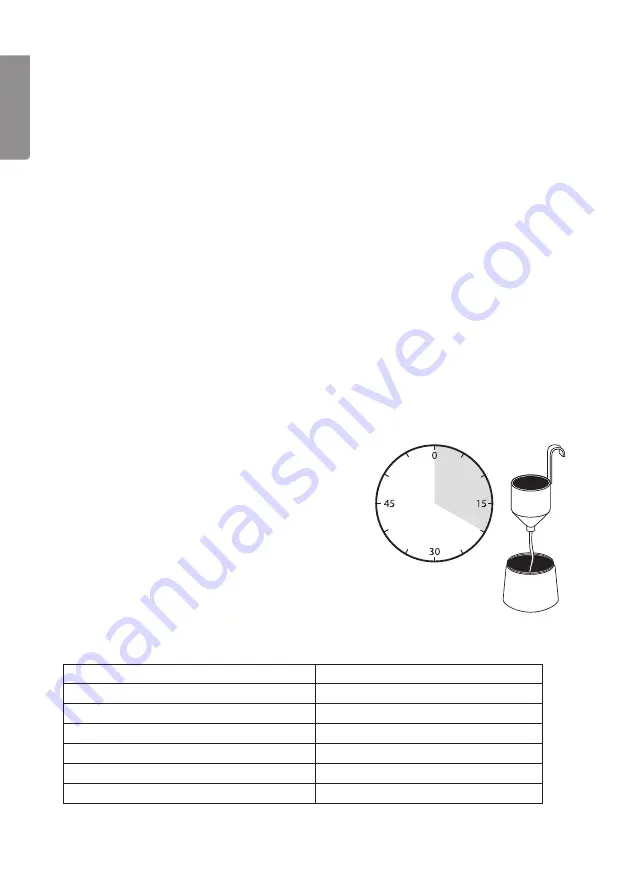
8
EN
GL
IS
H
Use
Preparations
Suitable coating materials
Water- and solvent-based paints, 2-component paints, primers, clear finishes, vehicle
finishes, glazes, wood preservants (sealants, oils, etc), wood stains, insecticides.
Unsuitable coating materials
Emulsion paints, alkaline paints, calcimine paints (whitewash), distemper, materials
with a flashpoint below 21 ºC.
Preparing the coating material (thinning)
Thoroughly shake the can of coating material before opening it. Coatings such as paints
normally need to be diluted/thinned before spraying. Test a small amount of the coating
before diluting it all. Follow the manufacturer’s advice for thinning the coating you
are using. Ask your local paint shop for advice if you are unsure, explain that you are
using a HVLP (high volume, low pressure) type spray gun. The thickness of a paint is
denoted by its viscosity and is measured by letting a certain amount of paint run through
a hole of a certain diameter. The longer it takes for the paint to run through the hole,
the higher the viscosity. Viscosity is measured in seconds.
Warning:
Only use coating materials with a flashpoint above 21 °C.
Example viscosities of various coating materials
Spray coating
Viscosity in DIN-seconds
Primer containing solvent
25–40
Varnish containing solvent
15–40
Water-soluble primer
25–40
Water-soluble varnish
20–35
Wood preservative, paint remover, oil
Undiluted
Disinfectant, insecticide
Undiluted
Vehicle paint/lacquer
20–35
Measuring the viscosity
1. Shake the container of paint before
performing a viscosity test.
2. Dip the entire viscosity cup into the coating
material so that it fills completely.
3. Hold up the viscosity cup and measure how
long it takes for the paint to run through
the hole.
4. Dilute the paint if it is too thick and measure
it again.
Summary of Contents for 40-9132
Page 2: ...2 ...









































